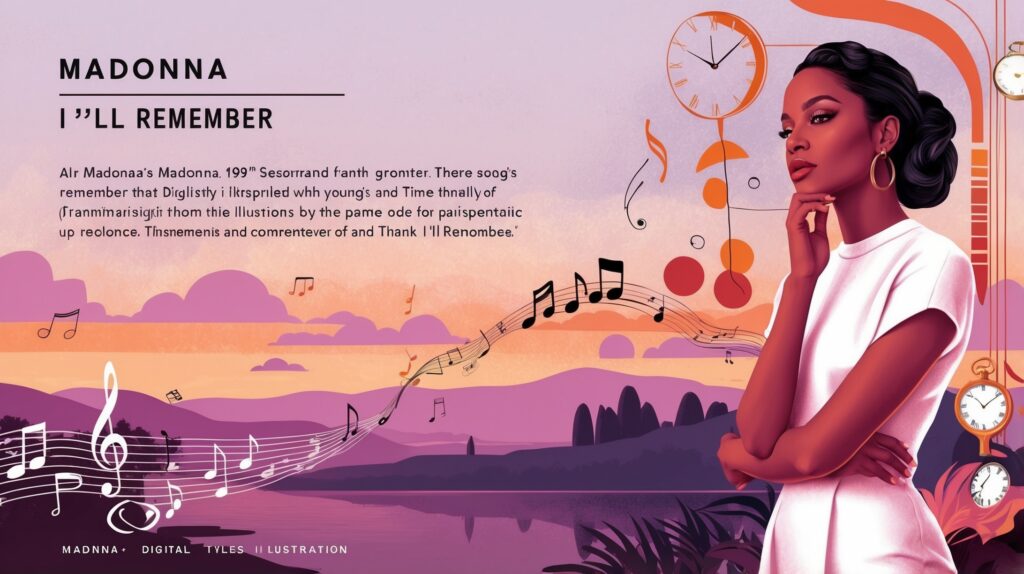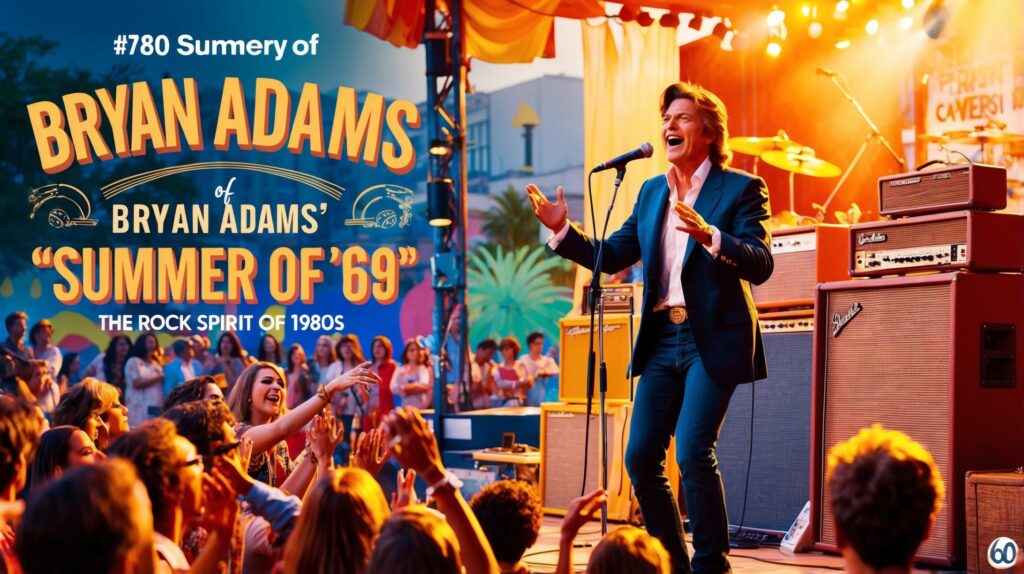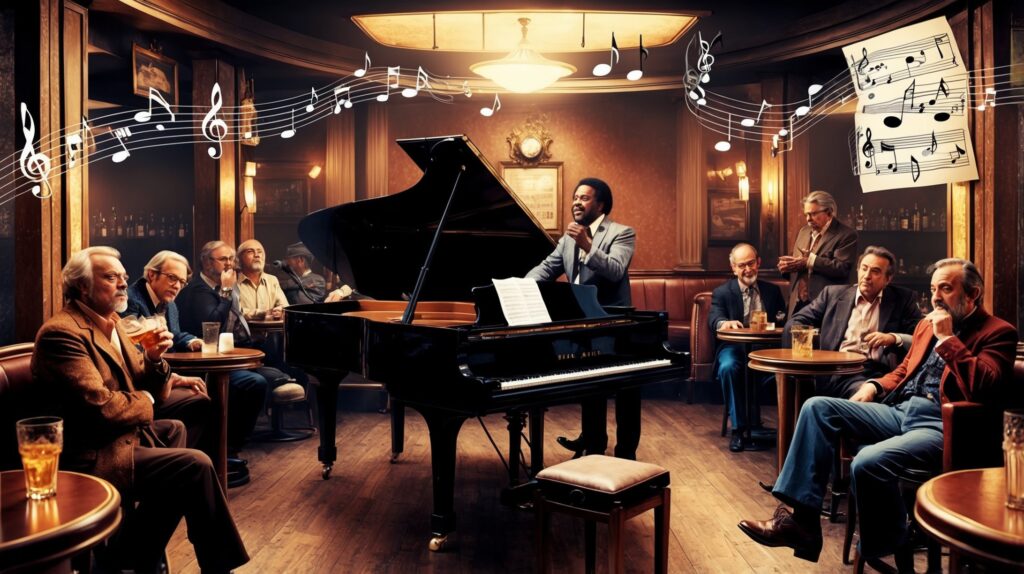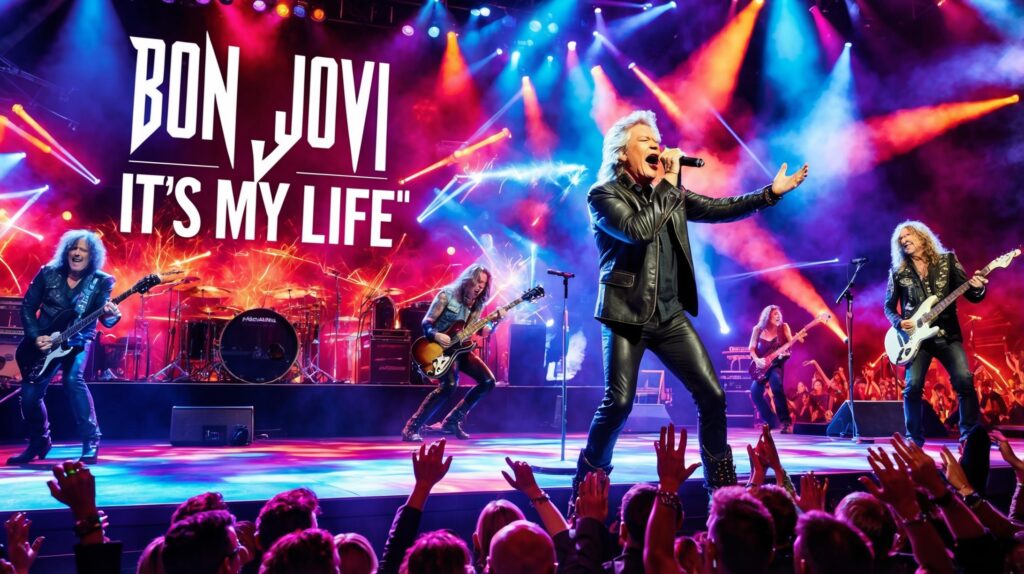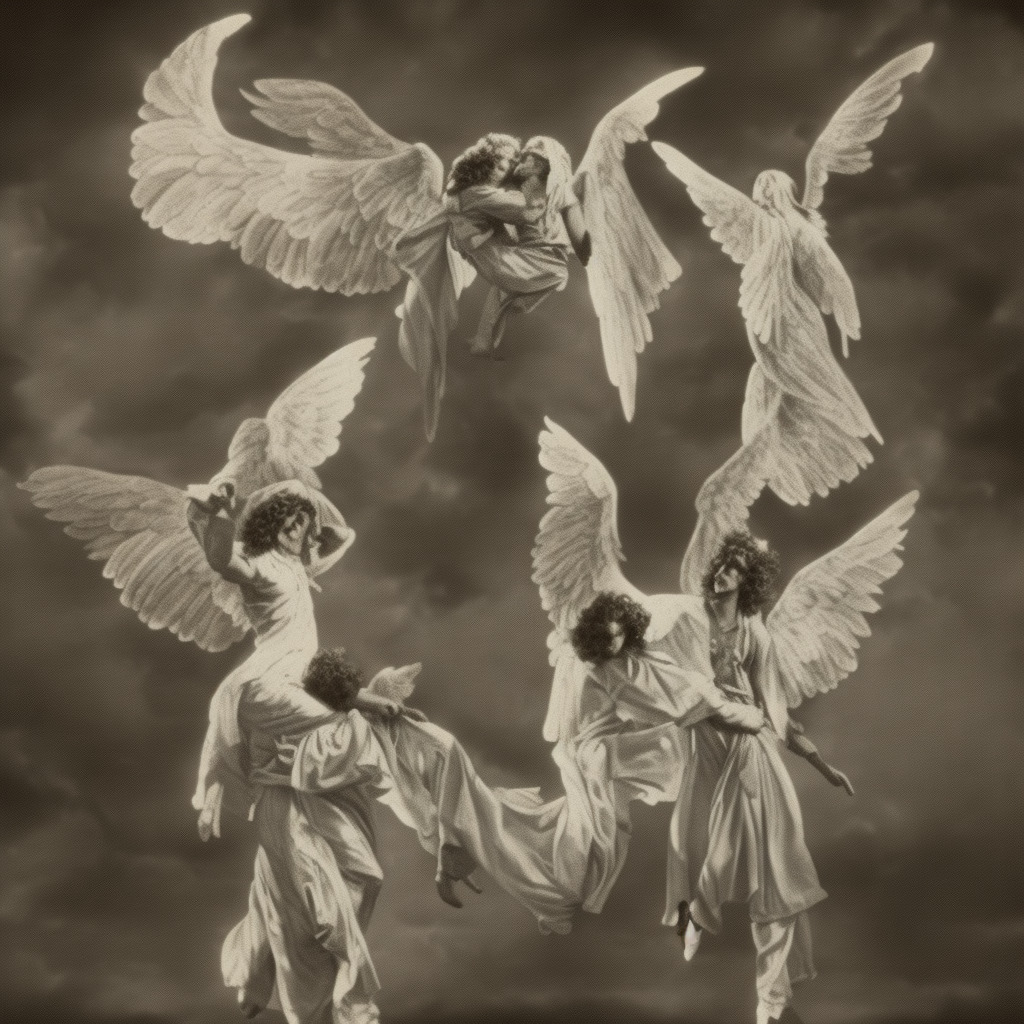🎵 Did you know Blues Traveler’s “Run-Around” holds the record for the longest-charting radio single at 49 weeks? 🤯 John Popper’s harmonica magic never gets old! 💫🎶 #BluesTraveler #RunAround #90sNostalgia #HarmonicaHeaven Read about it: tinyurl.com/3zy7d7a5
Blues Traveler’s Milestone: A Closer Look
“Blues Traveler: Celebrating decades of harmonica-fueled rock legacy and infectious tunes, transcending a one-hit wonder status.”
When it comes to American rock bands that have made an indelible mark in the world of music, Blues Traveler is undoubtedly one of them. Formed in Princeton, New Jersey in 1987, the band has seen numerous changes in its lineup over the years, but the core members – John Popper (vocals, harmonica), Chan Kinchla (guitar), and Brendan Hill (drums) – have remained constant throughout. Their brother Tad Kinchla (bass) and Ben Wilson (keyboards) joined in 1999 and 2000, respectively.
Perhaps best known for their 1994 hit “Run-Around,” Blues Traveler gained widespread popularity and recognition with this infectious track that showcased Popper’s harmonica prowess and the band’s tight, energetic musicianship. The song, which is featured on their fourth studio album, “Four,” received heavy airplay on both radio and television throughout the 90s, making it one of their most successful and enduring songs till date.
Allow me to take a step back and highlight a few potential drawbacks, as any seasoned music critic must. One could argue that Blues Traveler, like many bands from their era, fell prey to the dreaded “one-hit wonder” curse. While “Run-Around” continues to be their most recognizable tune, they never quite managed to surpass or even replicate its chart-topping success. However, true fans of the band will argue that their extensive discography, featuring more than a dozen albums, is packed with hidden gems and fan favorites.
Despite any perceived shortcomings, Blues Traveler’s accomplishments cannot be denied. Their song “Run-Around” won them a Grammy Award for Best Rock Performance by a Duo or Group with Vocal in 1996, and the band has sold millions of albums worldwide. Additionally, they have cultivated a loyal fan base through their electrifying live performances and have been a staple on the festival circuit for decades.
In conclusion, while Blues Traveler may not have consistently dominated the charts, their impact on the rock scene and their impressive musicianship – particularly John Popper’s harmonica virtuosity – have earned them a lasting legacy. “Run-Around” serves as a testament to the band’s unique sound and their ability to craft infectiously catchy tunes, and it continues to resonate with fans both old and new.
Charting the Success of a Catchy Tune
“Run-Around” harmonica magic: Blues Traveler’s catchy tune skyrockets to chart history, earning accolades and Grammy gold.
“Run-Around” was released on February 28, 1995, as the lead single from Blues Traveler’s fourth album, Four. With its infectious harmonica riff and memorable chorus, the song quickly gained traction and found its way up the US Billboard charts.
Initially, “Run-Around” made its debut on the Billboard Hot 100 at position 92 on April 29, 1995. But it didn’t take long for the song’s popularity to grow, as it steadily climbed the charts over the following months. Its peak position on the Hot 100 was at number 8, which it achieved on August 19, 1995. This accomplishment marked Blues Traveler’s first and only top 10 hit on the Hot 100.
In addition to its Hot 100 success, “Run-Around” also dominated the Billboard Adult Top 40 chart. The song peaked at number 2 on this chart and held the position for six non-consecutive weeks, showcasing its appeal to a broader audience. Meanwhile, it also made its way up the Mainstream Top 40 chart, reaching a peak position of 20.
The song’s chart performance was also notable for its longevity. “Run-Around” spent a total of 49 weeks on the Hot 100 chart, a testament to its enduring popularity. Furthermore, at the time, the song set the record for the longest-charting single in the history of the Billboard Hot 100 Airplay chart, remaining on the chart for an impressive 54 weeks.
As far as chart trivia goes, “Run-Around” was the fastest-charting song by a new Warner Bros. artist at the time since Madonna’s “Like a Virgin” in 1984, an impressive feat for Blues Traveler. Its success also helped the band secure a Grammy award for Best Rock Performance by a Duo or Group with Vocal in 1996.
All in all, “Run-Around” was a massive success for Blues Traveler, propelling them to new heights in the music industry and solidifying their place in the annals of chart history.
Dissecting the Lyrics of a 90s Classic
Once upon a midnight dreary
I woke with something in my head
I couldn’t escape the memory
Of a phone call and of what you said
Like a game show contestant with a parting gift
I could not believe my eyes
When I saw through the voice of a trusted friend
Who needs to humor me and tell me lies
Yeah, humor me and tell me lies
And I’ll lie too and say I don’t mind
And as we seek so shall we find
And when you’re feeling open I’ll still be here
But not without a certain degree of fear
Of what will be with you and me
I still can see things hopefully
But you
Why you wanna give me a run-around
Is it a sure-fire way to speed things up
When all it does is slow me down
And shake me and my confidence
About a great many things
But I’ve been there I can see it cower
Like a nervous magician waiting in the wings
Of a bad play where the heroes are right
And nobody thinks or expects too much
And Hollywood’s calling for the movie rights
Singing, “Hey babe, let’s keep in touch”
Hey baby, let’s keep in touch
But I want more than a touch I want you to reach me
And show me all the things no one else can see
So what you feel becomes mine as well
And soon if we’re lucky we’d be unable to tell
What’s yours and mine the fishing’s fine
And it doesn’t have to rhyme so don’t you feed me a line
But you
Why you wanna give me a run-around
Is it a sure-fire way to speed things up
When all it does is slow me down
“Run-Around” by Blues Traveler is a song that encapsulates the spirit of the ’90s with its catchy melody and introspective lyrics. Released in 1994 as part of their fourth album, “Four,” this song struck a chord with listeners as it delved into themes of love and trust in relationships.
The opening verse, with a nod to Edgar Allan Poe’s “The Raven,” sets a somber tone by describing the weight of a midnight phone call and the lies told by a trusted friend. This theme of deceit continues throughout the song, highlighting the struggle of wanting to trust and believe in the person you’re with, yet feeling betrayed by their actions.
However, the chorus offers a glimpse of hope and resilience. The singer questions why their partner is giving them a “run-around” and whether it’s meant to speed things up or slow them down in their relationship. This uncertainty, while frustrating, also showcases the desire to work through challenges and grow together.
The lyrics also depict a longing for a deeper connection and understanding, as shown in the lines “I want more than a touch, I want you to reach me / And show me all the things no one else can see.” This desire for true intimacy resonated with listeners who found solace in the song’s honest and raw portrayal of love and relationships during the ’90s.
In an era marked by significant social and political changes, “Run-Around” reflected the personal struggles and emotional complexities faced by many during that time. The song’s lyrics, woven together with Blues Traveler’s signature harmonica-driven sound and John Popper’s soulful voice, made it a memorable and enduring hit in the ’90s music scene.
A Visual Feast: The Magic Behind the “Run-Around” Music Video
Dive into the whimsical world of Blues Traveler’s “Run-Around” music video, an enchanting blend of live-action and stop-motion magic that stands the test of time.
Blues Traveler’s iconic song, “Run-Around,” is complemented by an equally enchanting music video that has become as memorable as the song itself. Directed by the highly talented and versatile Ken Fox, the magic-infused video features the band performing while trapped inside a diorama box, with the camera panning to reveal a mix of live-action and stop-motion animation.
The production of the music video was an intricate process involving an inventive and creative approach to storytelling. In a nod to the Wizard of Oz, the video opens in black and white, with the diorama box being set up in a dusty attic. It swiftly transitions into a vivid and colorful display once the music kicks in, bringing the diorama to life. A fascinating blend of mediums, the video showcases the band members interacting seamlessly with the stop-motion animations, creating a sense of wonder and delight.
One of the noteworthy aspects of the “Run-Around” music video is its budget, which is estimated to be around $140,000. While this may not seem like a massive amount by today’s standards, it was quite a significant investment during the mid-90s. The result is a visually stunning and engaging video that has stood the test of time.
Throughout the video, viewers are treated to a variety of whimsical and eccentric characters, such as a fire-breathing dragon, a dancing skeleton, and even Blues Traveler’s frontman, John Popper, appearing as a wizard. The combination of these elements creates a fantastical world that draws the audience in and perfectly mirrors the energetic and lively nature of the song.
Over the years, the “Run-Around” music video has garnered a cult following, inspiring fans to create their own tributes and interpretations. Various YouTube videos showcase fans’ creative takes on the concept, further solidifying the song’s status as a beloved classic.
In summary, the “Run-Around” music video stands out as a timeless and captivating visual accompaniment to Blues Traveler’s hit song. With its enchanting fusion of live-action and stop-motion animation, the video continues to capture the imagination of viewers and remains an integral part of the track’s enduring appeal.
The Mastermind Behind “Run-Around”: John Popper
John Popper, the lead vocalist and harmonica player of Blues Traveler, is also the talented composer behind the band’s biggest hit, “Run-Around.” With an innate gift for combining catchy melodies and engaging lyrics, Popper has established himself as a prominent figure in the world of blues and rock music. In addition to “Run-Around,” John Popper has composed a plethora of Blues Traveler’s memorable tunes, such as “Hook,” “But Anyway,” and “Carolina Blues.” Throughout his successful career, Popper’s compositions have consistently showcased his ability to captivate audiences with his storytelling and musicianship, making him an influential force in the music landscape.
Awards, Accolades, and Cultural Impact
“Run-Around”: A ’90s Grammy-winning classic transcending generations through heartfelt lyrics, infectious melodies, and its mark on TV, film, and gaming – the quintessential Blues Traveler anthem.
“Run-Around” has garnered much recognition and praise in the music industry over the years. Released in 1994, as part of Blues Traveler’s fourth studio album titled “Four,” the song skyrocketed to fame, cementing its place as one of the quintessential records of the ’90s. The catchy melody and heartfelt lyrics struck a chord with listeners worldwide, earning the song the prestigious Grammy Award for Best Rock Vocal Performance by a Duo or Group in 1996.
The song’s popularity extended well beyond the realm of music. It made its mark in various forms of media, making appearances in television, movies, and video games. “Run-Around” was prominently featured in the 1996 film “Kingpin,” starring Woody Harrelson, and Randy Quaid. The song’s infectious guitar riffs and harmonica solos provided the perfect backdrop for the film’s themes of friendship and redemption.
In the realm of television, “Run-Around” was used in the hit ’90s sitcom “Friends” in the season 2 episode titled “The One With The Baby On The Bus.” The song’s upbeat tempo and playful lyrics added a sense of fun and spontaneity to the beloved show, further highlighting the band’s versatility and broad appeal.
Furthermore, the song has also made its way into the world of video games. It was included in the popular Guitar Hero franchise, giving players the chance to relive the magic of this timeless classic by jamming along to the iconic guitar and harmonica parts that John Popper so effortlessly brought to life.
As with many popular songs, “Run-Around” has inspired a slew of cover versions over the years. These renditions span a variety of genres and showcase the song’s adaptability and enduring charm. A notable 2019 cover by the band Hootie & The Blowfish stands out as a favorite, with Darius Rucker’s smooth vocals blending seamlessly with the song’s signature harmonica riff, giving it a fresh and modern twist.
Over the years, “Run-Around” has continued to resonate with audiences, solidifying its status as a timeless classic that transcends generations. Its numerous accolades, media appearances, and cover versions serve as a testament to the enduring appeal and impact of this unforgettable Blues Traveler hit.
Diving into the Musical Structure
“Run-Around,” a classic track by Blues Traveler, showcases the band’s signature sound and musical prowess. Delving into the song’s structure, we can pick apart its various components and better understand the elements that contribute to its enduring appeal.
One of the first things to note about “Run-Around” is that it’s written in the key of G Major. The harmonic structure of the song predominantly revolves around the chords G, C, and D, which are the I, IV, and V chords within the key. These chords provide a strong sense of resolution and contribute to the song’s catchy and upbeat nature.
Throughout the verses, the song follows a chord progression of G-C-D-G, which creates a sense of familiarity and allows the listener to easily follow along. The chorus, in contrast, introduces an interesting variation to the chord progression, moving from G to D to C and back to G, which adds a sense of freshness and variety to the overall structure. This subtle change in the chord progression helps drive home the impact of the chorus and makes it more memorable.
As for tempo, “Run-Around” clocks in at a moderate pace, with a tempo of around 152 BPM (beats per minute). This tempo places the song in a sweet spot for listeners, as it’s not too slow to be considered a ballad, but not too fast to be a full-blown dance track. The moderate tempo allows the band to showcase their musicianship while still maintaining an accessible and radio-friendly sound.
The song’s arrangement features a mix of instruments that complement each other nicely, with the harmonica taking the lead in the intro and instrumental breaks, and the guitar driving the rhythm throughout. The bass and drums provide a solid foundation for the other instruments to build upon, while the keyboard adds a layer of depth and harmony. The tight interplay between these instruments creates a rich and dynamic sound that’s instantly recognizable as Blues Traveler’s signature style.
Another noteworthy aspect of “Run-Around” is its use of dynamics. The song starts off relatively mellow, with the harmonica and guitar gently introducing the main melody. As the song progresses, the band gradually builds up the energy, culminating in an explosive harmonica solo that’s a testament to John Popper’s virtuosity. This dynamic contrast is a key component of the song’s structure and contributes to its engaging and entertaining nature.
In conclusion, “Run-Around” by Blues Traveler boasts a well-crafted musical structure that expertly combines chord progressions, tempo, arrangement, and dynamics to create a memorable and enjoyable listening experience. This classic track is a shining example of the band’s musical talents and serves as a testament to their enduring appeal in the world of rock and blues music.


